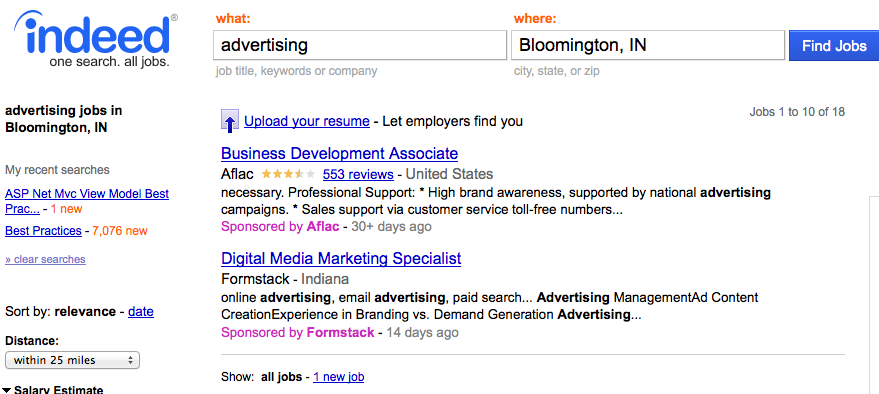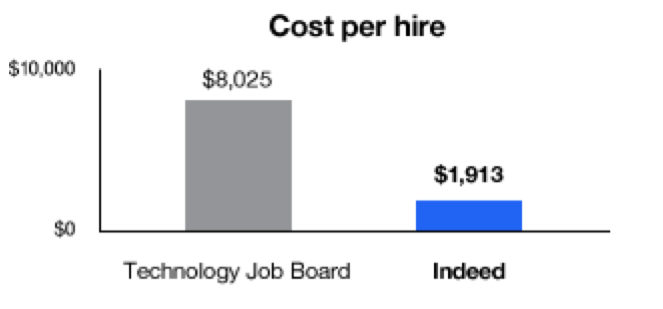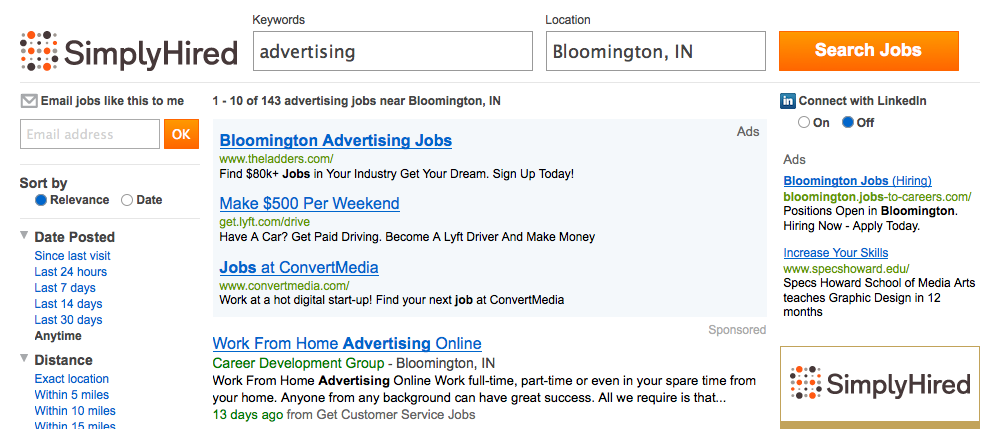The recruitment pay-per-click vertical is a slightly different animal, especially when it comes to job aggregators like Indeed and Simply Hired. While I’ve seen success with traditional AdWords and Bing campaigns for recruitment pay-per-click programs, expanding into job aggregators and social career networking platforms can help increase your qualified candidates and potentially lower your overall cost per hires. Below we will provide a brief overview and general best practices for Indeed, Simply Hired and LinkedIn in the recruitment pay-per-click vertical.
Before I get into the details of each of the platforms, I think it’s important to cover the basics of what is a job aggregator vs. a job board. Indeed and Simply Hired are considered job aggregators and what they do is pull jobs from thousands of job boards like Monster, Dice, ect. and allow a job seeker to search for jobs across various boards in one place. These job aggregators are similar to Google in the fact that they focus on keyword relevance. The job seeker enters a keyword and city and then thousands of jobs populate related to their search. Some of these jobs are organic searches while some are sponsored jobs. What we’ll be focusing on today are the sponsored jobs and how to use these pay-per-click ads to boost your candidate pool at a potentially lower cost per application and hire.
Indeed has been around since 2004 and is a trailblazer in the job aggregator world. When getting started with Indeed, you can either create job posts individually or have the available jobs pulled directly from your site. Or if you have the jobs via an xml data feed, Indeed can index them for you. It will take a few days for them to index the feed typically so allow some time. Once your have your sponsored jobs set up you can then create campaigns based around specific keywords or job titles. The sponsored jobs are based on a maximum cost per click – the more you bid typically the better the job placement. Here is a link with more tips and best practices for Indeed
Key Take Aways
- Higher bids help improve job placement
- Easy to using conversion tracking and can view conversions directly in the UI
- Be specific with job descriptions and titles
- Upload job board XML data feed or pull directly from your website
- Share you jobs on Facebook and Twitter for free!
- Use tracking software like ATS to track application or placements.
In a case study with a technology company using the Application Tracking System, Taleo Enterprise Edition, they reported 2X more hires and 75% lower cost-per-hires than technology job boards.
Simply Hired is very similar to Indeed in many ways and is another great source for finding qualified candidates. Simply Hired is available in 24 countries and 12 languages, with more than 30 million unique visitors per month. The pay-per-click UI is pretty simple. One draw back is that conversions are not available directly in the UI. If you are using the enterprise level package a Simply Hired rep will pull the conversion data for you on the backend and send it to you monthly. **Make sure you asked to have the data split between sponsored and organic conversions.
In comparing Indeed vs. Simply Hired, we experienced Simply Hired had 68% fewer applications compared to Indeed, but cost per hire was 28% lower than Indeed and had 42% lower cost per clicks. So while volume was lower with Simply Hired, we got a better bang for our buck with Simply Hired.
Key Take Aways
- Typically lower cost per clicks and cost per application
- Job seekers can connect directly to LinkedIn to view connections to jobs
- No conversions data available in the UI
- Upload job board XML data feed or pull directly from your website
- Refresh jobs often
- A/B test job descriptions
Now this is probably an obvious one for recruitment pay-per-click but we definitely wanted to include it. While overall job seeker volume for LinkedIn may not be as great as the job aggregators, the many targeting options available help increase the number qualified applicants – it’s all about quality vs quantity! LinkedIn mentioned that companies looking to fill more high priority jobs tend to see 30-50% more applicants using the Premium Sponsored Jobs. Here is another article with more information on the details of LinkedIn.
Key Take Aways:
- Minimum CpC of $2
- Higher conversion rates
- Targeting Options include
- Job title, job function, industry, geography, company size, company name, seniority, age, gender, LinkedIn group
- Targeting Options include
- Good ads have a CTR greater than 0.025%
- Great for attracting passive candidates
Closing Thoughts
All three platforms are great alternatives if you are looking to expand your recruitment PPC program and all are pretty easy to get set up. Just be sure to use a tracking system to track applications down to job placements to help you understand which platform truly works best for your needs and use that data to help optimize your program.







